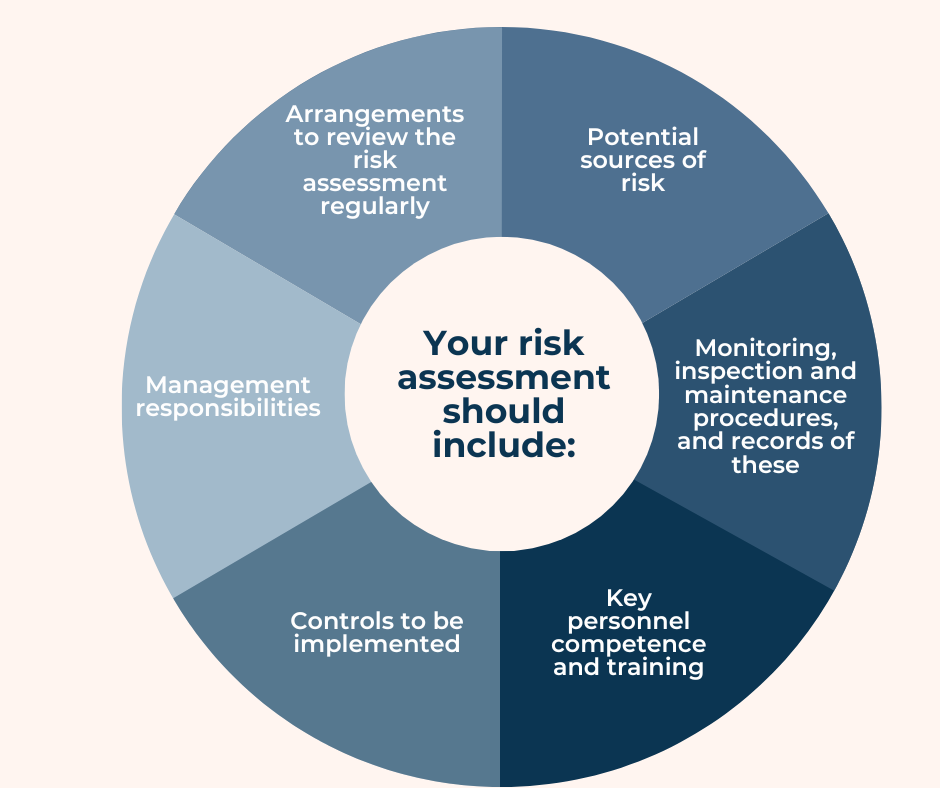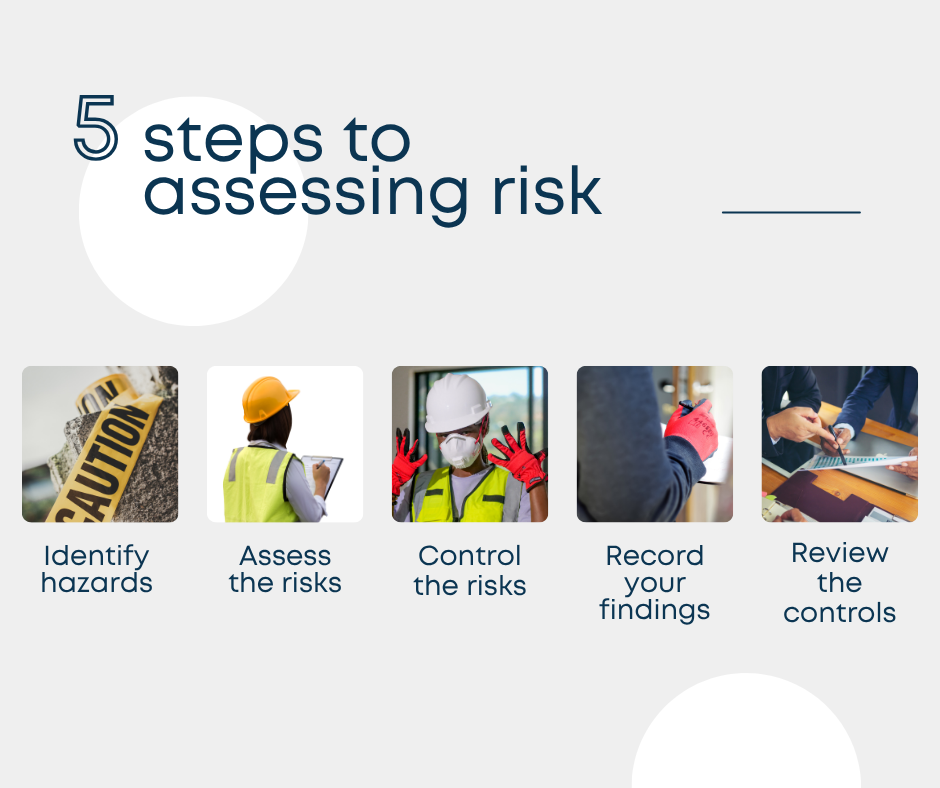Employers have a legal duty to safeguard their employees and others from harm.
Under the Management of Health and Safety at Work Regulations 1999, they are required to:
- Identify potential sources of injury or illness within your business (hazards)
- Evaluate the likelihood and severity of harm occurring (the risk)
- Take steps to eliminate the hazard where possible, or, if elimination isn’t feasible, put measures in place to control the risk
Risk assessment is a key element of the broader process for managing workplace safety.
Why risk assessment is important
 Risk assessments are essential for keeping workplaces safe and meeting legal requirements. But they’re not just about ticking boxes, they’re about protecting people.
Risk assessments are essential for keeping workplaces safe and meeting legal requirements. But they’re not just about ticking boxes, they’re about protecting people.
By spotting hazards early, risk assessments can prevent accidents, save lives, and keep teams safe.
They also make good business sense: avoiding incidents means less downtime, fewer repairs, lower insurance costs, and less chance of fines or compensation claims.
Risk assessments aren’t just a legal duty—they’re a smart, responsible way to look after your people and your business
How risk assessments are carried out
 Risk assessments can be completed in 5 steps:
Risk assessments can be completed in 5 steps:
- Identify hazards – look around and find anything that could cause harm (wet floors, heavy lifting, stress etc)
- Assess the risks – Figure out how likely those hazards are to cause harm and how serious the outcome could be.
- Control the risk – Put measures in place to reduce or remove the risk (Training, signs, equipment etc)
- Record your findings – Keep a record of what you found and what you did about it.
- Regularly review – Revisit the assessment to make sure it’s still accurate and effective.
When risk assessments should be carried out
Risk assessments aren’t just a one-and-done thing. They should be reviewed and updated regularly, especially when something changes. The key times to carry one out are:
- Starting something new. A new activity, process, or piece of equipment? Time to check for risks.
- When new hazards appear. If something potentially dangerous pops up, reassess.
- Staff changes, high turnover, new apprentices, or someone returning from leave may bring new risks or need extra support.
- Health warning signs such as Increases in sickness, stress, or absenteeism can point to hidden hazards.
- Risk levels change. Even familiar tasks can become more dangerous over time, especially if workloads or conditions shift.
- Personal circumstances. If someone becomes pregnant or develops a health issue, their risk profile changes and should be assessed
How can WA Management help?

WA Management offer a Risk Assessment online training course suitable or all workers involved in developing a risk assessment and/or enforcing procedures in the workplace.
Risk Assessment and Prevent Duty courses are essential tools in protecting the welfare of your workers. Make sure you don’t miss out on our 10% off deal on these courses, available until the end of July. Simply enter the code ‘welfare10’ at checkout to save!
Read more Consultant’s blogs here.
To keep up to date with the latest health & safety news and advice, follow us on social media:
